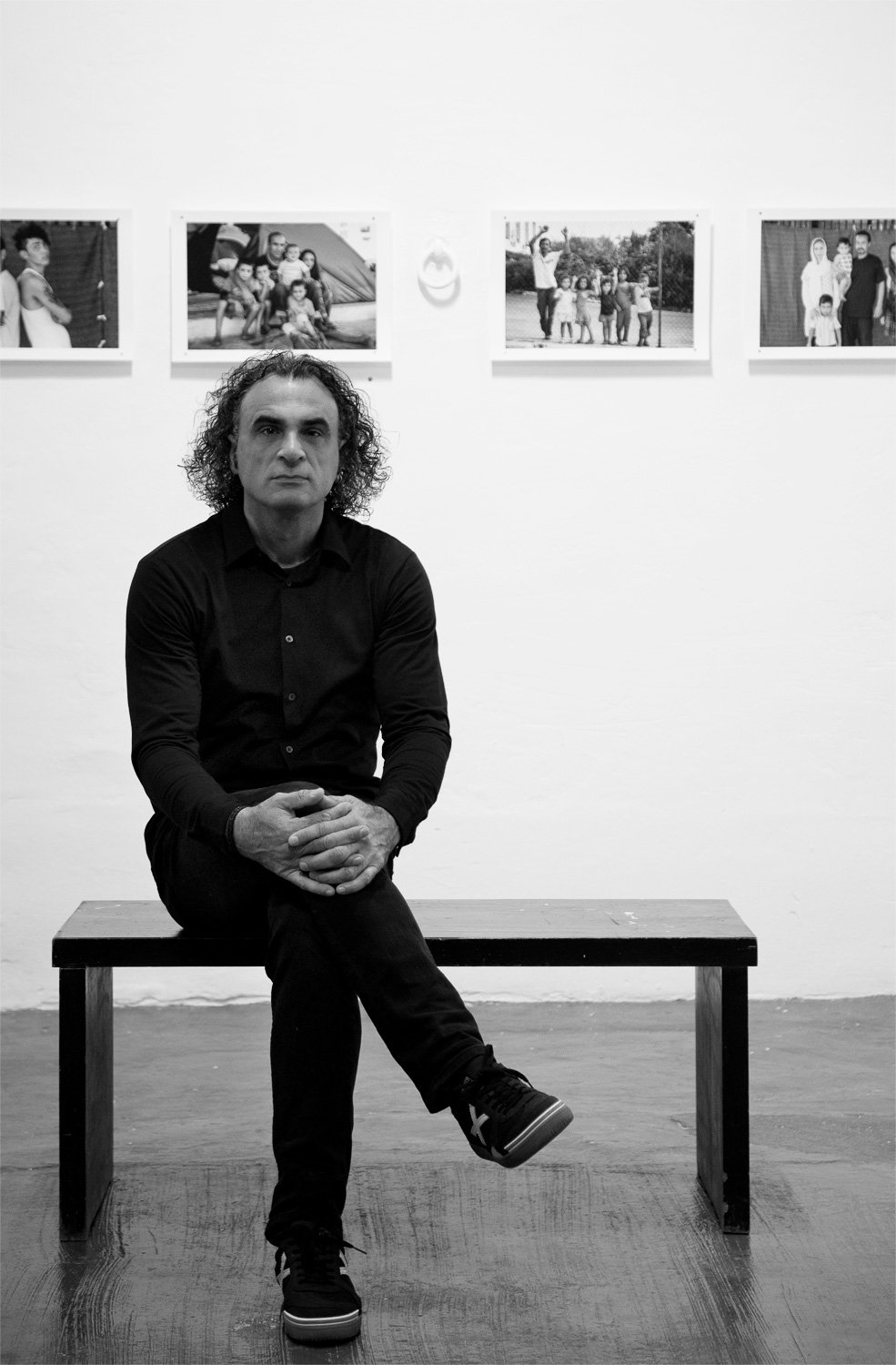I meet Marcos Palazzi in his studio, an old factory in the Rivera neighborhood. He is a fascinating personage, like his paintings that cover the walls of the studio. As we talk, he writes down on a piece of paper names and information that come up during the conversation. Palazzi's work is so powerful that it is hard to understand why he does not have greater recognition. He himself speaks of his work with excessive modesty. A great lover of comics, he tells me that our well-remembered mutual friend Gallardo asked him why he did not draw comics, and he tells me "but I have nothing to explain!". I point out to him, incredulous, his magnificent paintings. "Okay, yes, all right," he replies, "but this is something else..."
Marcos Palazzi is a figurative painter of portraits and scenes of the unusual and the ordinary. His characters live absurd situations in environments where details, apparently irrelevant, become fascinating and even humorous.
As he himself explains: "I was always drawing with a pencil and I started painting at the age of eighteen when I entered at EINA school thanks to one of my teachers, Serra de Rivera. I entered EINA with the idea of doing design but I soon switched to art. Afterwards I enrolled at La Massana and later at La Llotja. In all the schools I went through I had very good teachers. I also liked comics and I loved going to exhibitions and museums like the old MNAC, which was in La Ciutadella. There I got immersed in painting. I was alone and I would spend hours in front of a painting.
I don't know how to define my art. It's quite similar to the music I listen to and the books I read. I can say it's a bit eclectic. I like to vary the classical look on what surrounds me. Light is key. I like artificial light and I put the focus on what I want to show."
Since 1992 he has exhibited in Barcelona, Bologna, Berlin, Centelles, Geneva, Girona, London, Madrid, Milan, Monaco, New York, Reus, Sant Cugat, Santiago de Chile, Zaragoza, Tarragona.













